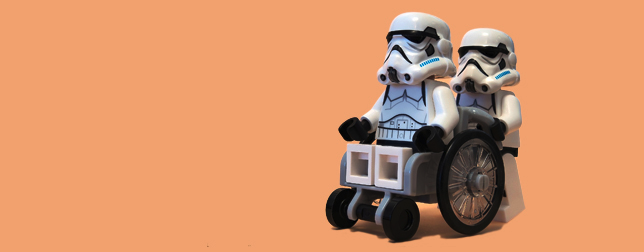Technology can bring us many good things. One of many are the advances that science has made to make the life of those in need a better one. How is that? With technology and of course with the help of wearables.
One of those companies helping people to have a better quality of life is Ambionics, born from the desire of a father whose child lost his lower left arm due to complications to provide his son with a better life. After plenty of research, he developed a design for a 3D-printable hydraulic prosthetic arm, complete with movable thumb being able to operate both manually and with assistance from a compressed air-hydraulic pump. As a result of this and the aim to help other kids around the world, he started Ambionics, which designs and 3D prints similar hydraulic prosthetics for youngsters. To support the company and hear the story first hand, Ben Ryan will be speaking at the upcoming WT | Wearable Technologies Conference SF July 25-26.
Ekso Bionics might sound like a futuristic name, which is, in fact, true as they are giving people superpowers. The EksoGT is a wearable exoskeleton for stroke and spinal cord injury rehabilitation, which means that it helps people to start walking again by supporting re-learning of correct step patterns, weight shifting, and potentially mitigating compensatory behaviors after a fatal accident where they lost their mobility.
Another superpower device was born from a project from Taiwan’s Industrial Technology Research Institute (ITRI). Free Bionics, developed an exoskeleton technology to provide affordable aids for disabilities, to rebuild their mobile ability with cheaper and lighter design. The exoskeleton robot has a light-weight structure, drive modules and adaptive gait control technologies. To learn more about their product and technology visit them at the WT | Wearable Technologies Show MEDICA Nov.13-16.
Restoring the movement of the hands caused by strokes or improve sensorimotor abilities of the hand in rehabilitation after brain damage, can be a painful and tiring long-lasting rehabilitation process. Tipstim, consists of a pulse generator and a hi-tech therapy glove (tipstim® glove) that helps to accelerate this process. The tipstim® pulse generator sends special electrical signals to the glove (tipstim® glove). These pulses are transmitted to the fingertips via textile electrodes which are woven into the glove. From there, the impulses are carried via nerve pathways directly into brain areas, which are responsible for the sense of touch and the movement of the hand with an improved sense of touch as well as an improved mobility of the concerned hand.
The times are changing for those with a lack of mobility thanks to the improvements made on the devices making them less heavy and easier to integrate them into our daily lives.












